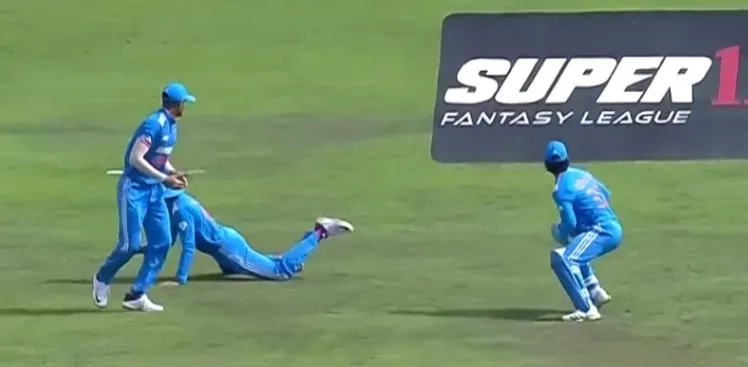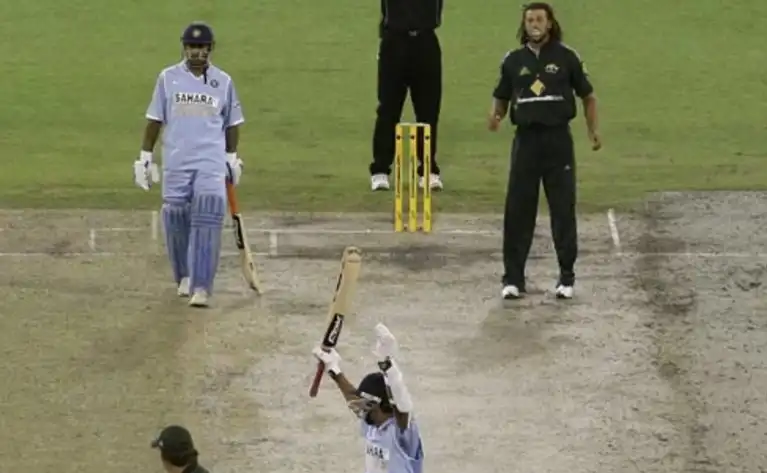 Shreyas Iyer's error started a series of drops (Twitter)
Shreyas Iyer's error started a series of drops (Twitter)
India's fielding flaws were all too evident in Match 5 of Asia Cup 2023 against Nepal, leading many to question their preparation and focus ahead of World Cup 2023.
Fielding blunders vs Nepal reflected India's fall in catching efficiency
The Men in Blue squandered multiple opportunities in the early phase of the game which highlighted a worrisome trend for a team with World Cup ambitions.
The drama unfolded early on in the innings when Shreyas Iyer missed a golden opportunity to send Nepal's opening batsman, Kushal Bhurtel, back to the pavilion on the last delivery of the opening over from Mohammed Shami.
As spectators were still absorbing that blunder, India’s fielding stalwart, Virat Kohli let slip another catch on the very next ball. Aasif Sheikh was the beneficiary this time as he watched the ball escape Kohli's grasp in the cover region.
However, the woes didn't end there. In a turn of events that seemed almost scripted for a dramatic day, Bhurtel got another lease of life in the fifth over. This time, Ishan Kishan was the culprit as he spilled a regulation catch off Shami’s bowling.
These repeated lapses brought an unsettling statistic to the limelight. Since the conclusion of World Cup 2019, India's catch efficiency in One Day Internationals (ODIs) has taken a significant dip.
As per the latest catching stat, with a catch efficiency of just 75.1%, India languishes in the 9th spot out of 10 major cricketing nations. Only Afghanistan trails behind with 71.2%.
This comes as a stark contrast to England's table-topping 82.8% efficiency, followed closely by Pakistan (81.6%), New Zealand (80.9%), Sri Lanka (78.8%), Australia (78.5%), West Indies (77.9%), Bangladesh (75.8%) & South Africa (75.6%).
Given the cricketing pedigree and the focus on fitness and fielding drills that the Indian team has been investing in, such numbers cast a long shadow. A team that has traditionally taken immense pride in its athleticism and fielding standards finds itself in a difficult situation.
The proximity of the World Cup only intensifies these concerns as matches in such elite tournaments can hinge on singular moments often defined by fielding brilliance or blunders.
While the Indian think-tank would be keen on addressing this trend, Nepal had capitalized on the offered opportunities. At the time of writing this article, they stood at a respectable 85/2 after 17 overs, with Bhurtel and Bhim Sharki being the two dismissed batsmen.
![[Watch] Virat Kohli Embarrassed After Dropping Simple Catch for India vs Nepal](https://onecricketnews.akamaized.net/parth-editor/oc-dashboard/news-images-prod/1693822100741_Untitled design (2).jpg)


.jpg?type=mq)
.jpg?type=mq)

